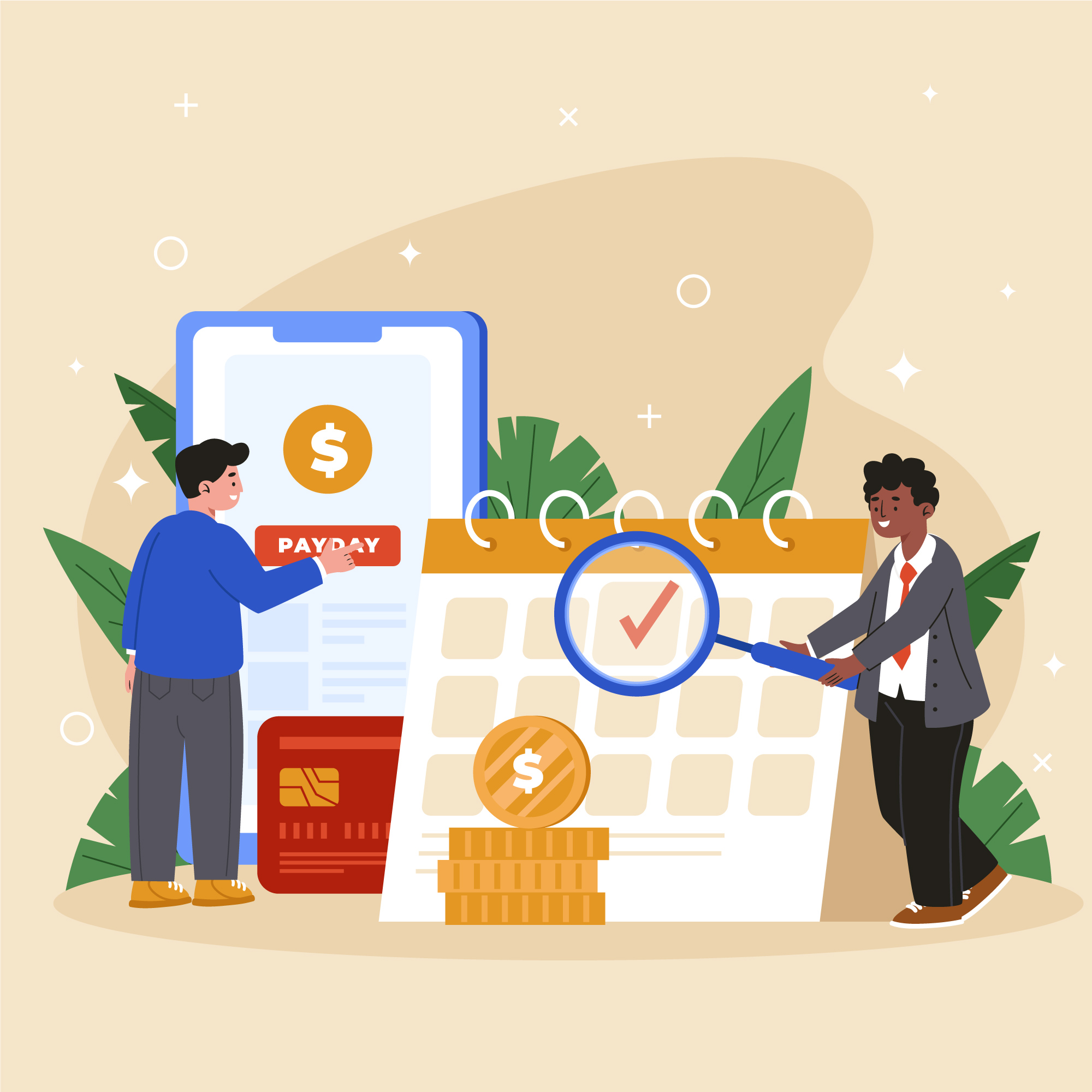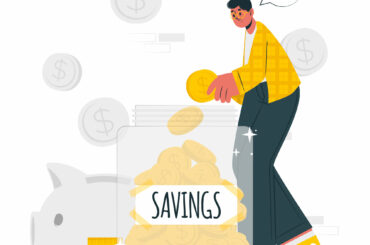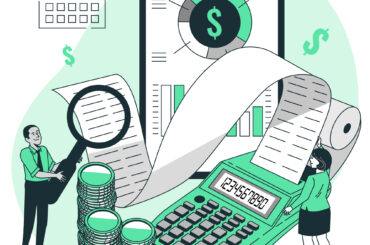For many Canadians, payday is the best day(or two) of the month. But without a clear plan, that paycheck can disappear quickly, leaving you wondering where all your money went. The key to financial success isn’t just earning money, it’s managing it effectively.
By following a structured paycheck routine, you can ensure your money is allocated wisely, helping you pay bills on time, save consistently, invest for the future, and avoid financial stress.
In this guide, we’ll walk through the best paycheck routine for Canadians in 2025, ensuring that every dollar you earn works for you.
Step 1: Review Your Pay Stub (Most People Skip This!)
Before doing anything with your paycheck, take a few minutes to check your pay stub for accuracy. Payroll errors are more common than you think, and catching mistakes early can save you money.
What to Check on Your Pay Stub?
- Gross Pay vs. Net Pay – Ensure your earnings are correctly calculated after deductions.
- Tax Deductions – Verify that federal and provincial taxes align with your tax bracket.
- CPP & EI Contributions – Confirm that your Canada Pension Plan (CPP) or Québec Pension Plan if you are in Québec and Employment Insurance (EI) contributions are correct.
- Retirement & Benefits Deductions – If your employer offers RRSP matching or benefits, make sure deductions align with your expectations.
If you spot an error, contact your payroll department immediately to get it corrected.
Step 2: Pay Yourself First (Before You Spend a Dime)
Most people save whatever is left at the end of the month—which is often nothing. The smarter approach? Save first, then spend what’s left.
Where Should Your Savings Go First?
- Emergency Fund:If you haven’t saved at least 3–6 months’ worth of expenses, make this your top priority. (For a step-by-step guide, check out: “How to Build an Emergency Fund in Canada.”)
- Retirement Savings (RRSP & TFSA): Contribute to a Registered Retirement Savings Plan (RRSP) for tax benefits or a Tax-Free Savings Account (TFSA) for tax-free investment growth.
- Short-Term Savings Goals: Whether you’re saving for a vacation, a new car, or a home down payment, set aside funds accordingly. (Need help setting financial goals? Read: “How to Set Financial Goals You Can Actually Achieve: A Guide for Canadians.”)
How to Make Saving Easy
- Set Up Automatic Transfers: Have a portion of your paycheck automatically deposited into savings and investment accounts.
- Use a High-Interest Savings Account (HISA): Earn interest on money you aren’t using immediately.
By saving first, you ensure that your financial future is a priority and not an afterthought.
Step 3: Cover Essential Expenses
Once savings are set aside, it’s time to cover your fixed and necessary expenses.
Key Expenses to Budget For:
- Housing Costs: Rent/mortgage should ideally stay under 35% of your income.
- Utilities & Bills: Hydro, internet, phone, and insurance payments.
- Transportation: Gas, car insurance, transit passes, and vehicle maintenance.
- Debt Payments: At least the minimum due, but ideally more to reduce interest costs.
How to Stay on Top of Bills
- Set Up Automatic Payments – This prevents late fees and missed bills.
- Use a Bill Calendar – Mark due dates to track upcoming payments.
Step 4: Pay Down High-Interest Debt (Don’t Let It Drain Your Paycheck)
High-interest debt—especially credit card debt can eat up your paycheck faster than anything else. The longer you carry a balance, the more you pay in interest.
Best Debt Payoff Strategies
- Avalanche Method: Pay off the highest-interest debt first to save the most money.
- Snowball Method: Pay off the smallest debt first for quick motivation, then move to the next.
- Debt Consolidation: If you have multiple debts, consider combining them into a lower-interest personal loan or using a balance transfer credit card.
Paying off high-interest debt frees up more of your paycheck for savings and investments.
Step 5: Invest for Long-Term Wealth
Once your debt is under control, start putting your money to work. Investing allows you to build wealth over time and secure your financial future.
Where Should You Invest in 2025?
- Index Funds & ETFs: Low-cost, diversified investments that track the stock market.
- Real Estate or REITs: If buying property isn’t an option, consider REITs (Real Estate Investment Trusts).
- Bonds & GICs: Safer, lower-risk investments for stability.
Getting Started with Investing
- Use a Robo-Advisor : Platforms like Wealthsimple automate investing for beginners.
- Open a Self-Directed TFSA or RRSP: Manage your own investments with Questrade or TD Direct Investing.
Even small investments grow significantly over time thanks to compound interest.
Ready to Start Investing? Choosing the right platform is crucial. (Learn more in my guide: “Best Investment Platforms and Brokers for Canadians in 2025.”)
Step 6: Look at the Next Payday (Plan Ahead to Avoid Surprises)
A big mistake people make with budgeting is only thinking about the current paycheck, leading to unexpected expenses before the next payday.
How to Plan for Your Next Paycheck
- What bills need to be paid before the next payday? (Rent, utilities, subscriptions, etc.)
- Are there any events, birthdays, or holidays coming up that require spending?
- How much do I need for groceries until the next paycheck?
- What’s left after covering essentials? (This money can go toward savings, investing, or fun spending.)
- Are there sinking funds I need to contribute to? (Savings for irregular expenses like car repairs or vacations.)
- If I use a credit card for spending, is it paid off in full?
Taking five minutes to review your finances prevents overspending and last-minute financial stress.
Step 7: Budget for Fun (Without Guilt)
A budget that doesn’t include any fun money is often unrealistic and difficult to maintain long-term. Cutting out entertainment, dining out, or personal spending entirely might work for a short time, but it usually leads to burnout or impulse splurges later.
That said, you don’t necessarily need a separate budget for fun spending. If you’ve already automated your savings, investments, and essential expenses, you might prefer to simply use whatever is left over for enjoyment rather than setting a strict fun budget. This approach keeps things flexible, you cover your priorities first, then enjoy guilt-free spending with what remains.
Smart Fun Spending Rules
- Set a Monthly Fun Budget (If You Need Structure): If tracking your discretionary spending helps, decide in advance how much you’ll allocate for entertainment, dining, and shopping.
- Use Cashback & Points Programs: Make your spending work for you with rewards programs like PC Optimum, Amex, or Scene+.
- Plan for Big Purchases: Instead of impulse buying, save ahead of time for things you genuinely want.
- Let Your Leftover Money Be Your Fun Budget: If your savings and investments are automated, you can spend what’s left guilt-free without micromanaging every expense.
At the end of the day, it’s about finding a balance that works for you. Whether you set a fixed fun budget or let your leftover money dictate your discretionary spending, the key is being intentional with your money so you stay in control while still enjoying life.
Step 8: Track Spending & Adjust as Needed
Budgeting isn’t a one-time task—it requires regular check-ins to stay on track. If you’re not reviewing your spending, small expenses can add up fast.
To learn how to effectively track your spending and make adjustments, check out my guide: “Budgeting 101: How to Create a Budget That Works for Canadians.” This article breaks down simple methods to help you stay in control of your finances.
Final Thoughts: Take Control of Your Paycheck in 2025
By following this paycheck routine, you’ll:
Save automatically and build wealth effortlessly
Eliminate high-interest debt and reduce financial stress
Invest wisely to grow your money long-term
Plan ahead so you never run out of money before payday
The key is consistency. Small changes today lead to long-term financial success.
FAQs
1. How much of my paycheck should I save?
Aim for at least 20%, but adjust based on your income and debt situation.
2. Should I pay off debt or invest first?
If your debt interest rate is above 6%, prioritize paying it off first. Otherwise, balance saving and investing.
3. What’s the best budgeting method?
The 50/30/20 rule (Needs/Wants/Savings) is a good starting point, but customize it to your lifestyle.





